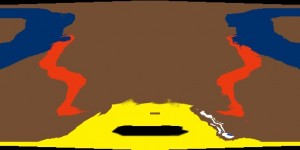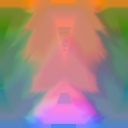Posts tagged plopp
Sculpties and Meshes in Second Life and OpenSim
2Imagine a drafting class. Students are designing buildings in AutoCAD, laying out blueprints, and modeling the architectures. The teacher then tells everyone, “Okay, now add your buildings to the virtual city.” The students save their files, load up a program, and import the models into a virtual world. Within a few minutes, the world changes from a blank landscape to a rudimentary, populated town. The teachers and students can now walk around the town, examine the buildings, note areas needing improvement (“this wall’s bigger than the other” or “the ceiling here is lacking structural support”), and participate in a collaborative environment where teachers give prompt feedback to the group, and students can share their work with their peers.
It’s just one of many practical uses of virtual worlds in an educational setting, which goes beyond simply exploring the environment, to actually constructing content that can be assessed and evaluated. However, being able to import models constructed in third party utilities requires some additional work.
In Second Life and OpenSim, content is made using primitives: basic building blocks consisting of boxes, cylinders, cubes, pyramids, etc. that can be twisted, stretched, and otherwise manipulated, then linked to other primitives to create sophisticated objects. The method has a fairly low learning curve, but is limiting in how detailed models can be.

The texture map for the "sculptie"

An example of a "sculptie" image
Second Life and OpenSim also support “sculpties.” Sculpties are 3d models derived from colored graphic maps. In OpenSim, you can import terrain files composed of grayscale images. White indicates the highest elevations, while black indicates the lowest elevations. Sculptie maps are kind of like that, except with the additional colors more detail can be passed into the program to represent complex 3d models.
I’ve had mixed results with sculptie creation, particularly in OpenSim. At best, the tools for easily creating them are overly simplistic and don’t contain the features many students would probably require. At worst, the setup for sculptie support is more complicated than it should be. It’s certainly doable, but we have to keep in mind the less technical teachers and students when integrating this technology into the classroom, and the last thing we want is a teacher spending an inordinate amount of time trying to cross the bridge between the 3d modeling software and the virtual world.

The same model in OpenSim

A model made in Plopp SL
One tool I found intriguing is Plopp SL, a very easy-to-use program for simple 3d modeling and sculptie creation, aimed at young kids. Most modeling programs use a simulated three-dimensional space for sculpting objects, but Plopp SL allows users to just draw their objects the traditional pencil way, and the program then “inflates” the object like a balloon so it takes on a three-dimensional quality.
After that, you can export the sculptie map and the texture map, and load them up in OpenSim with the Imprudence Viewer (soon to be the Kokua Viewer). However, when I tried this, I ran into some problems when I tried importing the model. Shown here is an example of a doll I made in Plopp SL, which created the above sculptie textures, and how it looks in OpenSim itself. As you can see, it doesn’t quite render correctly in OpenSim. Maybe there’s some configuration setting that needs to be tweaked, but needless to say, I’m not entirely thrilled with sculpties after these experiments.
However, Second Life and OpenSim have now added basic support for meshes. A mesh is a collection of different shapes that make up a whole object. In most 3d modeling applications these are developed using wireframe models. Both virtual world applications still have a ways to go, but progress is being rapidly made.
So why do we want meshes instead of sculpties? Manipulating and linking primitives together has allowed the creation of some amazing work in Second Life/OpenSim, but there’s tremendous value to being able to create models using standard industry tools. Meshes allow direct compatibility with third-party 3d modeling programs our students use like Maya, Sketchup, and AutoCAD. All a student has to do is save their model in Maya (in the COLLADA format), and upload it directly through the Second Life viewer.
Other open source virtual world applications such as realXtend, a fork of OpenSim, and Open Wonderland have had mesh support for a long time. But Second Life Viewer 2 is the first Second Life viewer to support the mesh environment. OpenSim is not fully compatible with it yet, but it’s getting there. The Kokua project is building a new viewer based on Second Life Viewer 2. It has a sleeker interface than the old viewer upon which others like Imprudence, Hippo, and Phoenix are based. support. Kokua is the successor to Imprudence, and will be incorporating many new features, while remaining fully compatible with OpenSim and Second Life.
I believe there will be value to allowing our students to access Second Life in the future, so having a viewer compatible with both Second Life and OpenSim will be important. This may involve modifying the viewer with a whitelist of acceptable regions, or putting some other filtering utilities in place, but gaining access to the learning opportunities in Second Life will become an invaluable asset in our students’ future learning. This is one thing which prevents me from adopting realXtend. Which it is immensely cool, feature-rich, and visually appealing, it is heading in a different direction than OpenSim. It has its own viewer which is not compatible with Second Life, although the ModRex project aims to allow realXtend-OpenSim compatibility. It is still new, and whether that will translate to Second Life remains to be seen.
A demo of realXtend’s mesh and animation capabilities. Looks quite a bit better than Second Life/OpenSim, doesn’t it?

